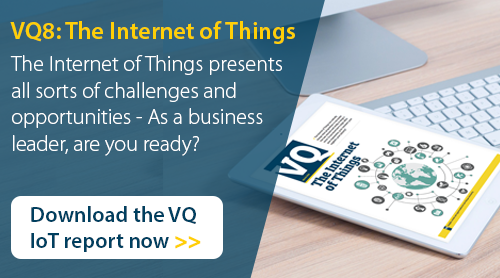
Big data is still big news. The likes of Google, Facebook and Microsoft, with its acquisition of LinkedIn, are undertaking digital land grabs to hoover up large quantities of data, be it medical or social, to feed their need for information. With these companies building millions of data points to nourish their machine-learning algorithms, what does big data now mean for the rest of us?
The truth is, most businesses don’t have the time, money or storage capacity to analyse massive data sets to inform strategy. As a result, the focus is shifting from big data to smart data. Big data is about volume and variety, whereas smart data is more focused on veracity and value – it’s about using whatever data you have to provide effective outcomes.
Your business may be better positioned to make use of data than you think, so here are seven ways in which your business can leverage the assets you already have.
1. Identify your data
Depending on the products or services you offer, you may be in possession of more data than you realise. It is almost inevitable that at least some of your processes and procedures will be digitised. At every point where an employee or a customer enters a piece of information into a computer, be it on your website or on your app, or in your ERP or MRP system, you have data.
Once you have identified the extent of your company’s data gathering capability, the next question is to find out how you can get more. Are there any further processes that you can digitise? Booking, buying or billing? Customer service? Order tracking? Look first at the points where your customers engage with you; it’s these touch points that will allow you to build a detailed picture of your customer habits: the where, when, why and how they consume your product or service.
In his excellent book Gamechangers, bestselling author, expert consultant and keynote speaker Peter Fisk talks about fresh, disruptive businesses who embrace new technologies to give them a competitive edge.
Data is one such advantage. And while some companies are more tech enabled than others, a lot of the time the biggest difference between these newer businesses and more established companies is mindset. Data is everywhere, it’s how you analyse and use it to inform business decisions that makes a difference.
2. Treat data as an asset
If the birth of big data has taught us anything, it is that data is an asset – it has real value. Many of the recent tech company acquisitions by Silicon Valley’s big players have been less about buying IP or expertise, and more about buying data and new ways to collect it.
Your client list is still your most valuable data asset, but the real gold is in the detail. Because of the potential depth and richness of your customer data, steps should be taken to maintain the data you have, improve it and protect it from unwanted attention. As we pointed out at the end of last year, half of UK SMEs were hit by a cyberattack and 10% experienced more than four attacks in 2016. An increased focus on data needs to be married with an increased focus on cybersecurity too.
3. Consider data synergies
If data is such an asset, it may be tempting to think that it’s only valuable if you keep it to yourself, but this thinking can be limiting. Take a look outside your company and beyond your own industry. Identify the kinds of data that would be useful to your business, but that you currently do not collect. Who else may have that data? Would they share it with you? Do you have anything you could offer in return?
What about your suppliers? Do they have data that could be helpful to you or vice versa? In the manufacturing industry, if a supplier has access to your data relating to buying habits, peaks in demand or similar, they may be able to better manage their inventory, improve their Just-in-time capability (see below) and reduce costs, allowing them to pass savings onto you.
This synergistic view of data could see your business partnering with others who may be outside your sector, but cater to a similar demographic, allowing both parties to better fulfil the needs of those customers. The only caveat is to ensure that, where appropriate, you have permission from customers to share their data.
4. Improve the customer experience
Customers may be less concerned about how your business uses their data if they can appreciate a demonstrable improvement in the experience they receive. How can your business use data to address the needs of your customers? For time and place-based services, can your data support dynamically adjusted pricing, allowing you to both manage surges in demand and allow customers to access to your services at a lower cost?
Consider what additional data a customer would be prepared to give you if it meant they could access services at a reduced rate. One example of this is the growth of so called ‘black-box’ car insurance policies, where customers are happy to have their location and driving style tracked in exchange for lower premiums.
5. Assess threats
Be mindful not only of the opportunities big data can present you, but also of the threats to your business from competitors who have harnessed the power of data. The biggest threats may come from disruptive startups who find new ways to collect, leverage or disseminate data, like Uber or Airbnb. The advantage your business could have over these startups is that you may already have years-worth of data work with.
The key here is to be prepared to adapt. Referring back to Gamechangers, Peter Fisk reminds us that the things that made a business great in the past may not be the things that are most relevant to its future greatness. Don’t be Kodak, who clung to an analogue past when the world had gone digital, and ultimately shuffled into irrelevancy.
6. Build a data-driven culture
The best way to avoid the threats of new entrants or innovative competitors is to ensure your business has a data-driven culture. Data-driven does not mean basing strategic decisions on the month-end sales reports, but rather taking a holistic view of the data produced across the business.
Gartner identifies a key characteristic of a data-driven culture as using data in a pervasive way. Data becomes ubiquitous across all aspects of company operations and is accessible to employees to inform decision making, both at the tactical, process-improvement level and at board-level, informing strategic thinking.
When recruiting, hire people who both understand data and are prepared to take responsibility for it. Like any other valuable asset, care needs to be taken to maintain the quality of your company’s data, to avoid decisions being made using flawed data.
7. Look to the future
As data becomes more valuable, it has the potential to become a currency in its own right. Tim Jones of Future Agenda has suggested that the coming years could see the creation of a data marketplace, where data is traded in the same way as shares are traded today. It is estimated that the totality of data in Europe alone will be valued at $1trillion by 2020.
In summary
The data assets your business has access to are unique and allow you to see the world differently, from an equally unique viewpoint. The correct management and informed interpretation of this data could allow businesses to frame the world in a different way. It may also change the rules about how the customer and the market connect and interact.
Connection is where the future lies – connecting existing data sets, existing capabilities and existing markets to create something new, but none of this would be possible without data. Get your business making the most of its data right now to ensure that it can still be relevant in the connected, data-driven future.


